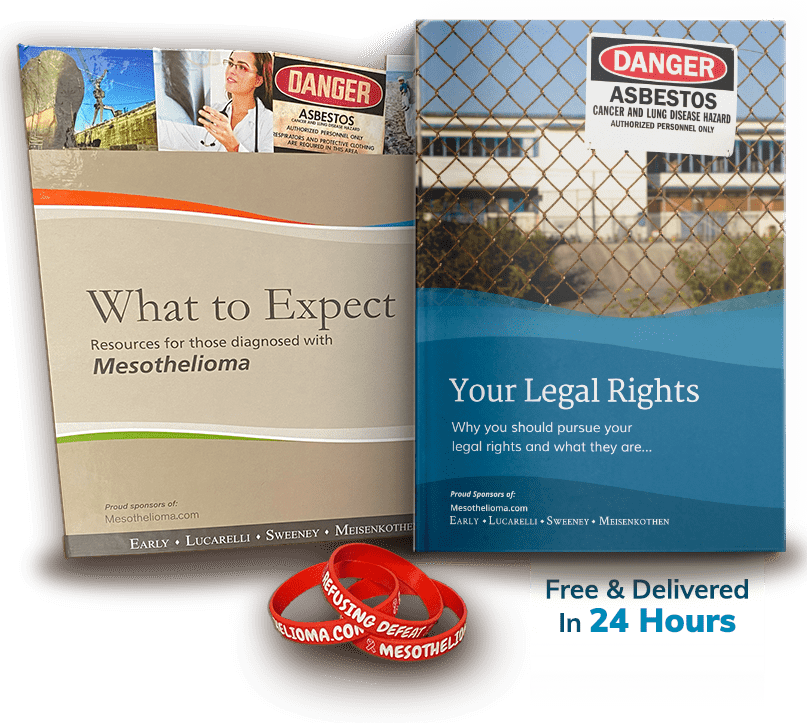01. Asbestos Bans in the U.S.
History of Asbestos Bans in the U.S.
Asbestosis not banned in the United States. Asbestos mining was banned in 2002 with the closing of the last U.S. asbestos mine. However, it is still legal to import and use the mineral in small amounts. Without a complete ban, many products still legally contain up to 1% of the mineral.
The Influence of Asbestos Diseases on a Ban
Researchers connected asbestos to diseases as early as 1918. In the 1930s, regulations were put in place to limit the development of asbestosis in workers.Asbestosiswas one of the earliest recognized and understoodasbestos illnesses. Asbestos and mesothelioma were connected inhistorical studiesin the 1940s and 1960s.
However, disagreements between political parties on狗万10万提款 presented a problem. Regulations passed were swiftly overturned, and all asbestos ban progress halted until the 1970s.
Still No Ban: Asbestos Regulations and Laws in the 1940s – 1970s
In 1938, a study declared low levels of asbestos in the air would not result in the development of asbestosis. The medical world now knows this is untrue, but from the 1940s to the 1970s this was the accepted belief.
Congress passed the following laws under this guidance:
- The 1951 Walsh-Healey Act
- The Longshoremen’s Act of 1960
The Walsh-Healey Actmaintained the recommended low levels of asbestos from the 1938 study. It also required evaluations of the design and efficacy of the equipment used to limit airborne asbestos.
The Longshoremen’s Act of 1960pertained to码头工人and recommended the same low level of asbestos determined safe in 1938. This act also detailed the threshold when asbestos fiber length is considered dangerous. The Walsh-Healey Act was updated in 1961 to include this provision as well.
NIOSH Recommends an Asbestos Ban
In 1976, The National Institute for Occupational Safety and Health (NIOSH) was the first United States federal organization to recommend a ban onasbestos in the workplace. No ban resulted from the NIOSH push, but its efforts led to a decline in asbestos use.
Some asbestos safety advocates feel asbestos companies’ political influence has thwarted attempts to make asbestos illegal in the United States.Asbestos companies and big businessesprofit off of the asbestos industry. When laws and recommendations are released, those with special interests may dissuade lawmakers from using scientific proof to regulate/ban asbestos. The lack of results from NIOSH’s recommendation is just one example of politics impacting regulations.
States That Have Banned Asbestos
Although there is no national ban against asbestos in the United States, some individual states have enacted stricter regulations than those approved federally.
New Jerseywas the first state to ban asbestos. The bill was spearheaded by Assemblywoman Lisa Swain and passed in October of 2018.
Connecticutfollowed suit and passed a similar bill in the U.S. Senate in 2019. However, the bill failed in June 2019.
While there aren’t bans in other states,many states have enacted strict fines on asbestos use.
02. EPA and Asbestos Bans
What Is the EPA’s Role in Asbestos Regulations?
The Environmental Protection Agency (EPA) is the federal government agency tasked withregulating asbestos in the United States. The Clean Air Act of 1970 granted the EPA this responsibility. This act classified asbestos as a hazardous air pollutant and banned spray-on asbestos. Since then, the EPA has passed various laws that regulate asbestos use.
“One of EPA’s priorities is to protect the public from adverse health effects of asbestos.”
–EPA
What Is the Toxic Substance Control Act (TSCA)?
The EPA’s largest piece of asbestos legislation was the Toxic Substances Control Act (TSCA) of 1976. This legislation resulted in the following three items:
What Is the Asbestos Ban and Phase-Out Rule (ABPR)?
On July 12, 1989, the EPA issued a ban on most asbestos-containing products. Initially, the EPA’s asbestos ban strictly regulated certain products. Two years later, the Fifth Circuit Court of Appeals in New Orleans overturned the ban.
The New Orleans ruling was prompted by a lawsuit,Corrosion Proof Fittings v. EPA.
The 1989 partial ban on asbestos was the final result.
03. Attempted Bans: Early 2000s
Attempts at Asbestos Bans: Early 2000s
In the early and mid-2000s, lawmakers introduced two bills that would have enacted strict regulations and/or complete bans on asbestos:
- The Ban Asbestos in America Act (the Murray Bill)
- The Bruce Vento Ban Asbestos and Prevent Mesothelioma Act
Congress did not pass either piece of legislation.
米urray Bill
In 2002, Senator Patty Murray introduced the Ban Asbestos in America Act, commonly known as the Murray Bill, to the Senate. In 2007, the bill unanimously passed in the Senate but did not pass in the U.S. House of Representatives.
To pass the bill in the Senate, Senator Murray did give concessions. If passed, the bill would not have banned the sale of all asbestos-containing materials. Instead, it would have banned products with asbestos specifically added. This created a loophole for asbestos-contaminated minerals. Naturally occurring minerals located near asbestos deposits may be contaminated with the carcinogen, such as those mined in Libby,米ontana.
Bruce Vento Ban Asbestos and Prevent Mesothelioma Act
The Bruce Vento Ban Asbestos and Prevent Mesothelioma Act was introduced on September 15, 2008. The goal of the bill was to strengthen the TSCA by banning more types of asbestos-containing products. The bill did not pass Congress.
In addition to the EPA requirements in the bill, it would have also expanded the definition of asbestos. The bill would have added winchite, richterite and asbestiform amphibole minerals. Winchite and richterite are both found in thevermiculite mines in Libby, Montana.
04. Asbestos Laws Today
Asbestos Laws Today: Is the U.S. Closer to a Ban?
There has been a recent wave of legislation in an attempt to strengthen asbestos regulations. There have been two pieces of asbestos-related legislation passed since 2016. The first was under President Barack Obama.
Advocates for a complete asbestos ban have called upon the EPA for action.
Concerns include:
- lack of response about a complete asbestos ban
- lack of support for a complete asbestos ban
- lack of regulations on asbestos currently in use
These concerns were largely aimed at former EPA administrator Scott Pruitt and his successor Andrew Wheeler.
What Is the Lautenberg Act?
The Frank R. Lautenberg Chemical Safety for the 21st Century Act gives Congress the power to ban asbestos. In 2016, this act added asbestos to the list of top 10 chemicals for priority action. Thisbill was signed under President Obama. However, the EPA has not banned asbestos under this law during the Trump administration.
An example of a risk-based chemical assessment is the EPA’s risk assessment for asbestos. This assessment has undergone review and will be revised to address concerns and limitations identified by the EPA’s peer review committee.
Findings of such risk assessments could contribute to stricter regulations or movements toward a ban.
What Is the Significant New Use Rule (SNUR)?
The Significant New Use Rule is an addition to the TSCA creating a process and pathway for uses of asbestos to reenter the market. The rule states theEPA must be notified of plans to reintroduce asbestos-containing productsnot currently on the market. The rule may also be referred to as the April 2019 Final Rule.
TheAsbestos Disease Awareness Organization (ADAO) claimsthe SNUR “falls woefully short of taking meaningful action to protect public health.”
Critics of the SNUR, including the ADAO, question if this new rule could allow for more asbestos products to enter the market.
05. Asbestos Bans Around the World
Asbestos Bans Around the World
米ore than 60 countries across the globe have banned asbestos. Some of the most notable bans include those in Canada and Brazil.
In the past, Canada and Brazil were the main exporters of asbestos to the United States. Asbestos exports into the U.S. from Canada halted when the country banned the mineral in 2018.
TheBrazilian asbestos ban, enacted in 2017, has not stopped the transport and exportation of the mineral. From 2015 to 2018, Brazil was responsible for 96% of all asbestos imports into the United States.
According to the most recent data,all the asbestos imported into the country in 2019 came from Russia.
Aworldwide asbestos bancould prevent dangerous asbestos from crossing borders. This trading may result in asbestos passing through countries with an asbestos ban en route to its destination.
国家与国家石棉禁令
- Algeria
- Argentina
- Australia
- 奥地利
- Bahrain
- Belgium
- Brazil
- Brunei
- Bulgaria
- Canada
- Chile
- Colombia
- Croatia
- Cyprus
- Czech Republic
- Denmark
- Djibouti
- Egypt
- Estonia
- Finland
- France
- Gabon
- Germany
- Gibraltar
- Greece
- Honduras
- Hungary
- Iceland
- Iraq
- Ireland
- Israel
- Italy
- Japan
- Jordan
- Kuwait
- Latvia
- Liechtenstein
- Lithuania
- Luxembourg
- 米acedonia
- 米alta
- 米auritius
- 米onaco
- 米ozambique
- Netherlands
- New Caledonia
- New Zealand
- Norway
- Oman
- Poland
- Portugal
- Qatar
- Romania
- Saudi Arabia
- Serbia
- Seychelles
- Slovakia
- Slovenia
- 苏th Africa
- 苏th Korea
- Spain
- Sweden
- Switzerland
- Taiwan
- Turkey
- United Kingdom
- Uruguay
As the number of countries banning asbestos grows, critics of the United States’ lack of a ban hope the U.S. may feel pressure to follow suit. As more countries ban the mineral, it also becomes harder for theUnited States to import large amounts of asbestos.
Without a complete asbestos ban, Americans and others across the globe continue to be at risk ofasbestos exposureand developing万博专业版.




